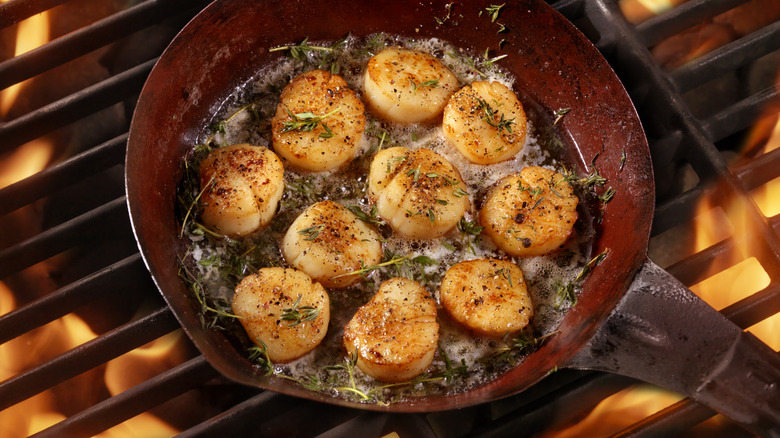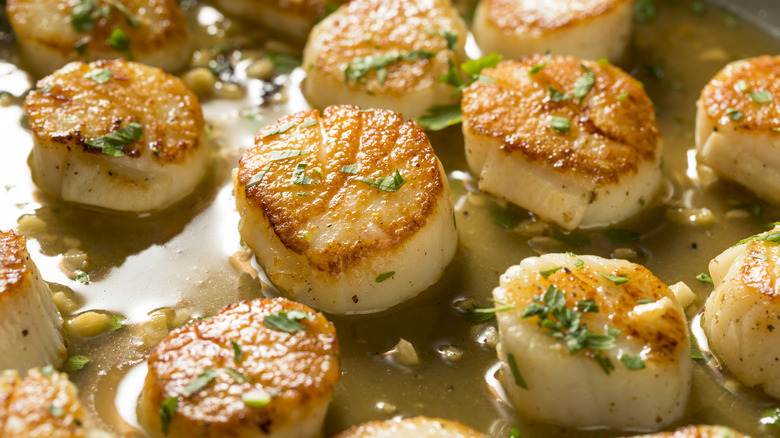Why Searing Is The Absolute Best Method For Cooking Sea Scallops
Scallops are a popular and elevated seafood option but they can be difficult to cook, and different types of scallops call for different methods of preparation. For instance, sea scallops are bigger, saltier, and thicker than bay scallops and require expertise to execute well. Luckily, we rounded up a trio of experts to guide us through the tricky process. Our first expert, Kory Foltz (the executive chef at Sunseeker Resort), noted, "Sea scallops have a more intense flavor than bay scallops." As for how to cook them, Foltz says that searing them in a hot pan is the best option. "They brown from the natural sugars in the scallop and develop a great crust."
Our next expert, chef Jeffrey McInnis of Root & Bone Miami and Stiltsville Fish Bar (who you may also recognize as a contestant from "Top Chef") agrees with the searing method. McInnis explained, "High heat, short period of time, serve them right away, don't overcook." He added, "I suggest patting the top of the scallop very dry with a towel and searing them on high heat to get a dark, heavy sear." Finally, Nicole Brisson — the executive chef at Brezza & Bar Zazu in Las Vegas — said, "I prefer to pan-sear and get a nice caramelized crust on each side. You want that hard sear for extra flavor and texture." With that in mind, you can check out Tasting Table's recipe for seared scallops or our recipe for shrimp and scallop scampi, which also use the searing method.
How not to cook sea scallops
Now that we know the best way to cook sea scallops, it's time to talk about which cooking methods the experts think that you should avoid with this protein. Firstly, don't boil sea scallops. Foltz said, "The worst way to cook them would be boiling. Some foods lend themselves to being boiled like a potato, but a scallop is best enjoyed in a way that enhances the natural flavor and allows the delicate texture to shine." Meanwhile, Brisson thinks that there are a couple of techniques that may work but aren't the best match for sea scallops. She explained, "I think steaming or sauteing without proper technique doesn't do the scallops justice."
When you stick to searing the scallops, you'll make sure that they come out as delicious as possible. Just make sure that you don't overcook them, as McInnis warned, because the texture will become tough and rubbery. Because they're fairly small in size, scallops don't take too long to sear — only about two to three minutes on each side. Additionally, you can keep track of the internal temperature, which should be at about 115 degrees Fahrenheit when you take them off the burner — the scallops will continue cooking off of the heat until reaching the perfect temperature.

